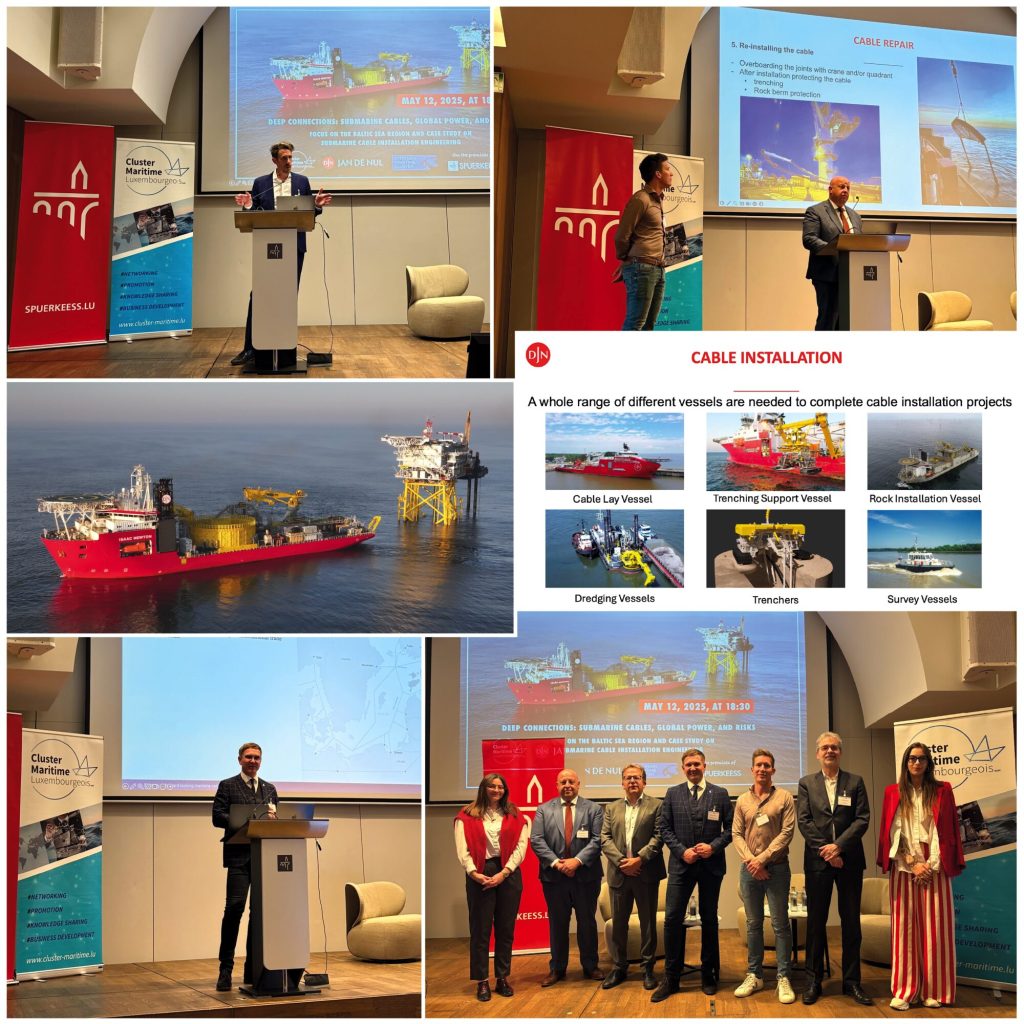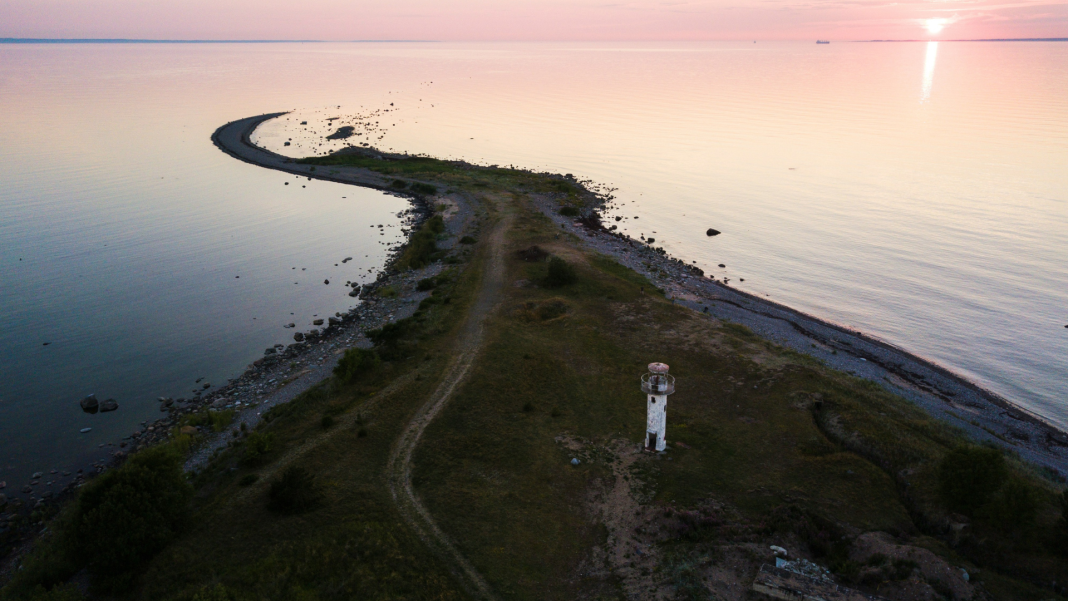The security of intercontinental networks has become a strategic and sovereignty priority for states. And in an increasingly digital globalised world, protecting these networks means protecting the economy, national security, and society as a whole.
With more than 95% of the world’s internet traffic passing through submarine cables, an outage or sabotage can have global consequences. The Luxembourg Maritime Cluster organised a conference on the theme “Deep Connections, Submarine Cables, Global Power and Risks”, showing that the protection and resilience of energy and Internet infrastructure (especially underwater) are more strategic than ever.
Protecting Estonia’s undersea infrastructure
Sharing around 300 km of common border with Russia and “critically linked between Scandinavia, Russia, and Central Europe, Estonia is serving as gateways for products moving between East and West and connecting major shipping routes”, said Ragmar Saksing, General Manager at the Estonian Maritime Cluster (EMC).
The country of 1.3 million inhabitants is a strategic member of the EU, NATO and the UN, with Sasking adding that ”the country is also known for its digital leadership and innovation and strong startup and tech ecosystem with 10+ unicorns”.
With a 3,700-kilometre coastline including 235 ports, the country holds significant maritime importance, as 60% of its logistics activity is operated by sea. According to the EMC’s General Manager, the Estonian maritime sector employs 20,000 people, contributing 5% to the country’s GDP. ”The objective is to grow our maritime sector to 8% of GDP in the next 5+ years”, he said.
Undersea cables are vulnerable but largely unseen and unprotected, Sasking said, recalling recent undersea incidents in the Baltic Sea that caused major disruptions and price surges in Estonia, for instance increasing the cost of electricity by ten times compared to Finland.
”European policy is now pushing for more cross-border energy interconnectors to secure energy and climate goals.”
Smart maritime innovation
To ensure its security and defence Estonia inspects suspicious vessels especially from Russia; around 250+ shadow fleet inspections have been inspected according to Sasking.
Furthermore, ”while Estonia is a smart nation connecting Europe and safeguarding hidden infrastructure, it aims to become a leader in smart maritime innovation”, he said. On innovation and international collaboration, ”Estonia develops intelligent systems to compensate for limited naval power, and continues to put a strong focus on NATO and EU cooperation”.
To better understand the marine environment, the country launched the “SEAWOLF” project. The programme ”aims to create a digital replica of the marine environment using a network of smart, floating platforms to gather a wealth of data, leading to a deeper understanding of the oceans”, Estonian government said. ”This newfound awareness will empower policymakers to enact effective measures for marine protection”.
Safeguarding Global Networks – From Risks to Protection
Filip Olde Bijvank, Head of Commercial Subsea Cables at Jan De Nul Group, a Belgian marine construction group, said: ”Subsea cables are vital to transmitting renewable energy (wind, solar) across regions. Because the global energy mix still relies heavily on fossil fuels; renewables represent just around 20%”.
As energy demand continues to surge, making stable and interconnected grids has become more crucial than ever. ”Interconnectors are key for stabilising national grids, through balancing supply vs. demand across regions, while transferring renewable energy across borders efficiently, such as solar from North Africa to Europe”, he said. ”Therefore, European policy is now pushing for more cross-border energy interconnectors to secure energy and climate goals”.
The Jan De Nul Group head highlighted current real-world risks and infrastructure vulnerabilities issues, such as the recent electricity blackout in Spain : ”A 1.41-second glitch at two solar plants led to a nationwide power outage because Spain’s only major interconnector (1.2 GW) overloaded and was shut down by France”, he said. ”As a result, the incident caused seven deaths and a widespread disruption, which highlighted the fragility of energy infrastructure”.
Talking about the increasing damages to subsea power and data cables in the North and Baltic Seas, he said that this kind of sabotage “raises concerns over deliberate infrastructure attacks from ”shadow fleets”.
Bijvank concluded with three points: ”The energy transition isn’t just about renewables-it hinges on secure, well-maintained transmission infrastructure; Subsea cables and grid interconnectors are essential to delivering green power safely and stably across Europe; and as geopolitical tensions rise, the protection and resilience of energy infrastructure (especially underwater) are more strategic than ever”.

Read more articles:
Low-Cost Microgravity Solutions

